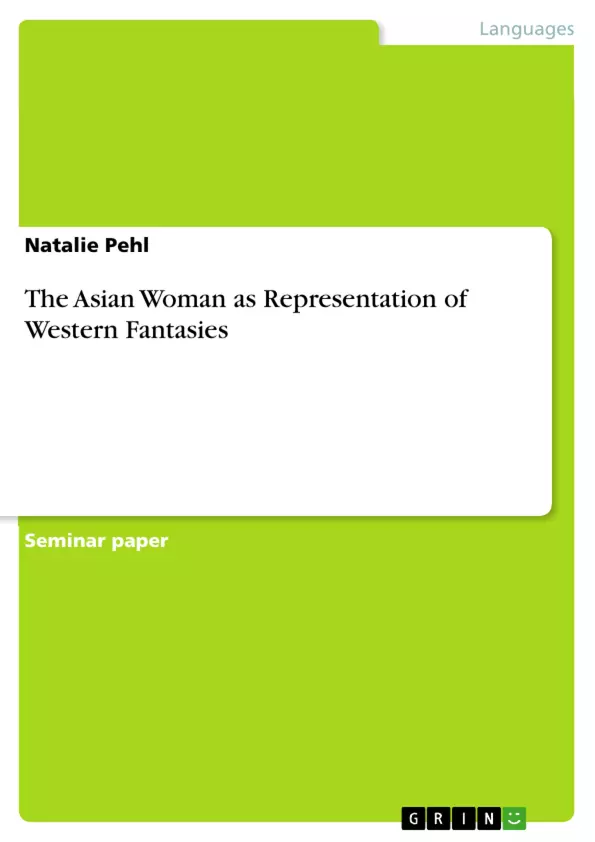The fascination of the orient and occident has been in the discussion for ages. But what makes this attraction between West and East? Why are we longing for the other side of the world and what fascinates us there?
Especially femininity has brought a lot fascination to both of these sides of the world - orient and occident -. This hot discussed topic shall be illustrated with the example of Cho-Cho San from "Madame Butterfly" and Suzie Wong, the seductive stereotype of the Asian women portrayed in Richard Mason's novel "The World of Suzie Wong".
Table of Contents
- Introduction
- The Asian Woman as Representation of Western Fantasies
- The Image of the Traditional Geisha
- The "China Dolls"
- Cho-Cho San as an Example for the "China Doll"
- Suzie Wong
- Conclusion
- Work Cited
Objectives and Key Themes
This paper examines the Western stereotype of the Asian woman as a "China Doll," exploring its origins and the way it reflects and reinforces Western fantasies about the Orient. The paper focuses on the role of the traditional Geisha in shaping this stereotype and uses the examples of Cho-Cho San in Puccini's opera Madame Butterfly and the Chinese prostitute Suzy Wong to demonstrate how these characters embody Western desires and expectations.
- The construction of the Asian woman as a representation of Western fantasies
- The role of the Geisha in shaping the "China Doll" stereotype
- Western Orientalism and its impact on the depiction of the East
- The portrayal of Asian women in Western media and its implications
- The relationship between the East and the West in the context of colonial power dynamics
Chapter Summaries
- Introduction: This chapter introduces the concept of “Asiaphilia” and the Western fascination with Asian women. It discusses the connection between this fascination and the stereotype of the “China Doll.”
- The Asian Woman as Representation of Western Fantasies: This chapter explores the concept of Orientalism, as defined by Edward Said, and its impact on the portrayal of the East in Western culture. It argues that the Western depiction of the Orient is often constructed and serves to justify Western dominance.
- The Image of the Traditional Geisha: This chapter examines the role of the Geisha in traditional Japanese culture and how their profession has been often misinterpreted in the West.
- The "China Dolls": This chapter explores the stereotype of the “China Doll” and provides examples of how it has been represented in Western media.
Keywords
This paper focuses on the key themes of Orientalism, the “China Doll” stereotype, the Geisha, Western fantasies, Asian women, and the relationship between the East and West. It also touches upon concepts of colonial power dynamics, gender representation, and the impact of Western media on cultural perceptions.
- Citation du texte
- Bachelor of Education Natalie Pehl (Auteur), 2013, The Asian Woman as Representation of Western Fantasies, Munich, GRIN Verlag, https://www.grin.com/document/294637



